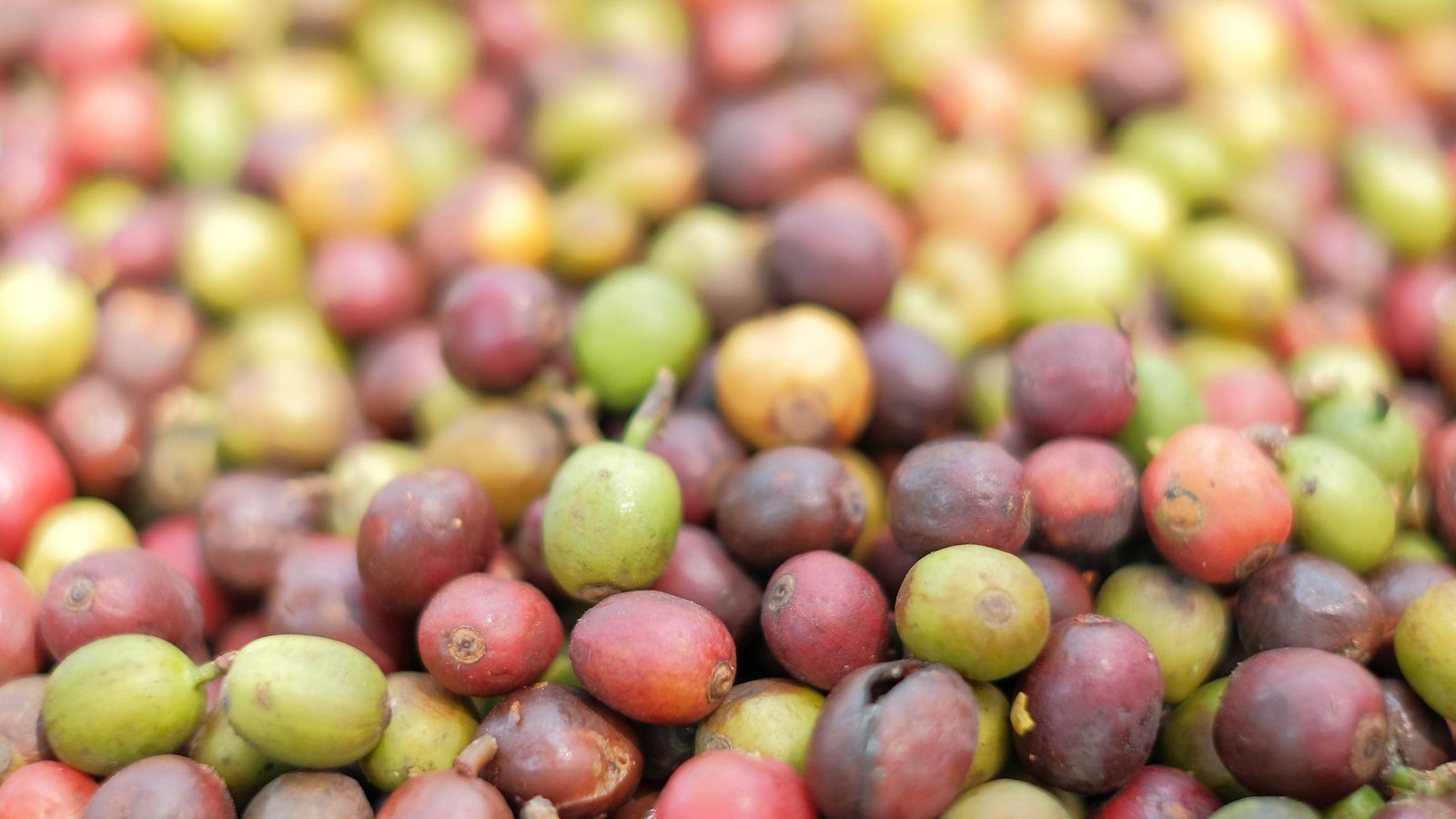The dry, natural, or unwashed coffee processing method is a traditional technique in which the entire coffee cherries are dried with the beans inside, without removing the pulp or mucilage. This method imparts unique characteristics to the coffee, resulting in a distinct flavor profile. Here is an overview of the dry natural coffee processing method:
- Harvesting: Coffee cherries are handpicked when they are fully ripe. The cherries should be red or yellow, indicating their readiness for harvest.
- Sorting: The freshly harvested cherries are sorted to remove any overripe or underripe fruits, as well as debris.
- Drying: The sorted cherries are spread out in a single layer on large, flat surfaces such as patios, raised beds, or mats to dry in the sun. The cherries are often turned regularly to ensure even drying.
- Natural Drying: The cherries are left intact during the initial drying phase, allowing the pulp and mucilage to dry around the beans. This process can take several weeks, depending on weather conditions.
- Mechanical Hulling: Once the cherries are sufficiently dried, the beans are mechanically hulled to remove the dried pulp and parchment layer, revealing the green coffee beans.
- Final Drying: The hulled beans undergo a final drying phase to reduce their moisture content to the optimal level for storage and transportation.
The dry natural processing method imparts distinct flavors to the coffee due to the extended contact between the beans and the fruit during the drying process. The beans absorb some of the sugars and fruity compounds from the pulp and mucilage, resulting in a cup with pronounced fruitiness, sweetness, and often a heavier body. The flavors can range from berry-like and tropical fruit notes to winey or fermented characteristics.
Dry natural processed coffees are particularly popular in regions with consistent sunny and dry weather, as the method relies on the sun for drying. Ethiopia is well-known for producing high-quality dry natural coffees, such as those from the Yirgacheffe region. However, this processing method is also used in various coffee-producing regions around the world, contributing to the diversity of coffee flavors available to consumers.


